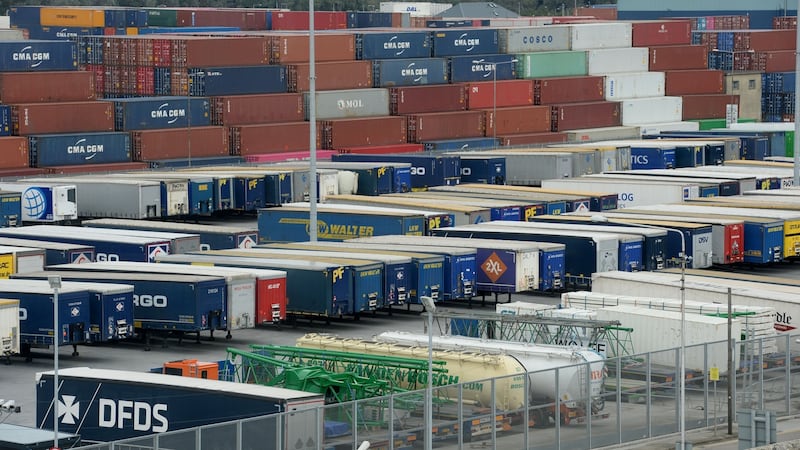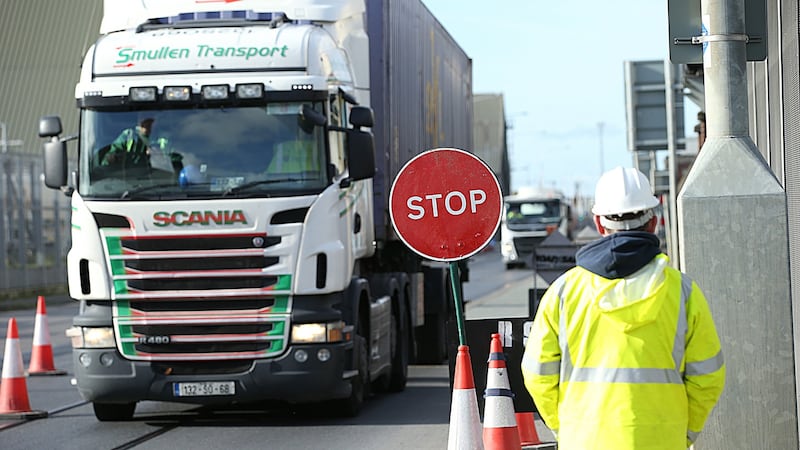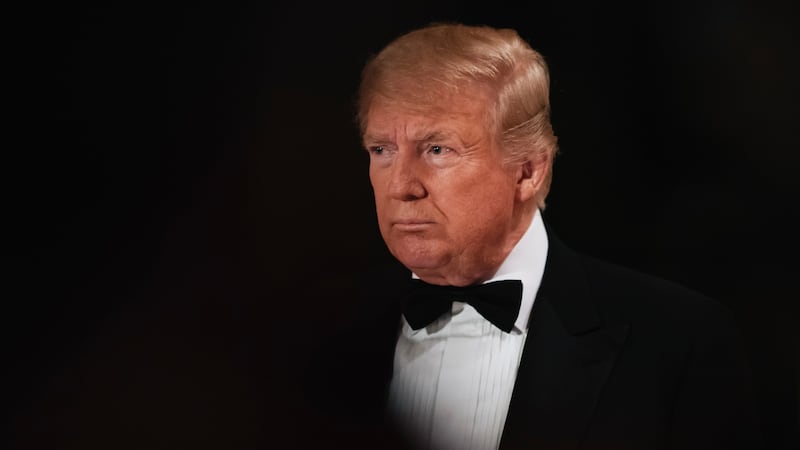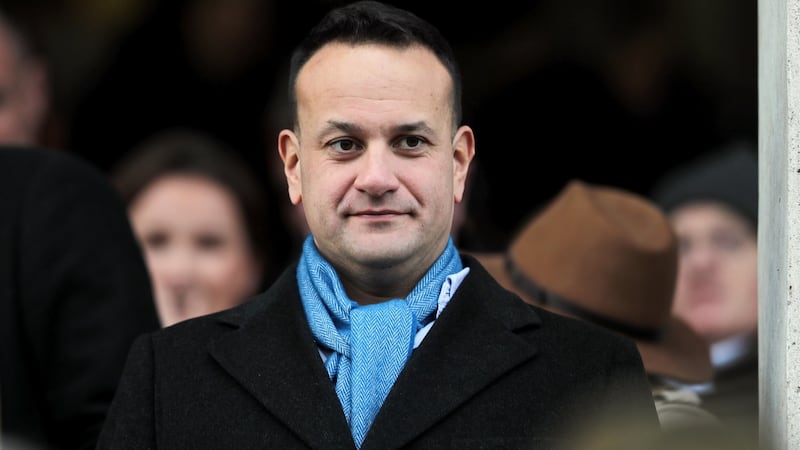Last year the Irish economy dodged the bullets. The prospect of the UK crashing out of the European Union without a withdrawal agreement was taken off the table. Trade tensions ebbed and flowed, but did not explode. Talk on international tax reform continued – but with no agreement yet. These risks were all postponed – not removed. But despite the resulting uncertainty, the economy still put in a strong performance.
What about 2020? It looks like another year of living dangerously – with all the major risks still on the table. With no clarity on the more significant threats likely until later in the year – if then – the economy enters the year with significant momentum. But predicting how it will end in 2020 is another matter entirely. Here are five key things to watch.
1. Brexit – the trade talks: The same story, only different. Last year was dominated by the threat of a "no-deal" or "crash-out" Brexit. This was avoided but as we enter 2020 another kind of no-deal comes into focus – the risk of the UK leaving the transition period at the end of this year without having agreed a trade deal with the EU. This would lead to serious challenges in Irish trade with the UK, notably in sectors like food. And even if there is a deal, there may still be new trade challenges.
So what indicators do we need to watch? The first is whether Johnson does a U-turn on his intention, now written into in the UK withdrawal Bill, not to extend the transition period, due to run out at the end of 2020. An extension for one or two years is possible, though Johnson has so far set his face against this, despite warnings from senior EU figures that this may not leave enough time for a deal. EU trade commissioner Phil Hogan has predicted that he might, indeed, blink.
If there is no extension, expect the temperature to rise in the second half of this year as the end of December deadline approaches. We then need to see whether the EU and UK could do a basic deal on trade in goods by this deadline – seen as the most that could be achieved – leaving areas like services and data exchange for later talks. Even doing this would require a deal on fisheries – likely to be highly controversial – and a commitment by the UK not to cut its standards in areas like the environment and workers’ rights.
The size of Boris Johnson’s majority does give him scope in terms of what kind of Brexit he wants to see. But the basic choice is clear – the more the UK diverges from EU rules and regulations, the less free access UK businesses will have to EU markets. We still don’t know how Johnson will call this one, despite the hard Brexit drumbeats currently sounding.

2. Brexit – Northern Ireland: As well as talks on a new EU/UK trade deal, separate negotiations will take place in a joint committee on how the new trade arrangements for Northern Ireland contained in the withdrawal agreement will work in practice. Under its provisions, goods are set to be checked crossing the Irish Sea – meaning no Border checks here. Because the North will remain part of the UK's customs territory, this requires some complex new rules and procedures to ensure tariffs are collected on some goods entering the North from Britain, with refunds available to businesses selling these products in the North. There will also be some bureaucracy on goods heading from the North into the UK.
As this arrangement was agreed late in the day – following the meeting between Taoiseach Leo Varadkar and Boris Johnson near Liverpool in October – details of how it will operate have still to be worked out. This new regime is due to commence in January 2021, so time is short here, too. And it is vital for Ireland, North and South, that this works. Businesses in the North will want certainty, and to minimise disruption. For the Republic, it is vital that the EU is satisfied that the proper checks and controls are taking place on goods entering the single market.
These talks are separate to the trade negotiations, but there is a link. If the EU and UK agree a trade deal involving no tariffs on goods, then it does remove one complication in relation to the North. But a failure to agree an EU/UK deal would make the new arrangements for the North all the more complicated.

3. Trade wars – or peace?: The arrival of Donald Trump to the White House has threatened to overturn the practice of global trade. The World Trade Organisation, which oversees disputes, has been seriously damaged by the US blocking appointments to its Appellate Body – which hears appeals against WTO panel rulings. This threatens to upend the whole dispute resolution mechanism used to solve rows in international trade and thus threatens the entire multilateral structure overseeing trade.
Trump has taken an aggressive approach of slapping tariffs – special duties – on imports from countries that he sees as treating the US unfairly, a further move away from the multilateral process.
Late last year the US and China reached a deal to try to end 18 months of building tensions and tit-for-tat tariffs. Under the deal, the US has agreed to reduce some tariffs in return for more Chinese purchases of American products and better protection of intellectual property. US shares soared in end of year trading as a result. But we have seen before how such deals can fall apart in the blink of an eye with a Trump tweet.
Whether the US/China deal holds will be a key marker in 2020. And Trump has also targeted the EU, backed by this time a WTO decision on subsidies to Airbus and the impact these had on Boeing, with Irish butter and cheese exports hit and whiskey threatened. As a small exporting economy with a significant reliance on the US market, this is a vital one for Ireland.

4. Corporate tax reform comes to the boil: For many years Ireland's corporate tax regime was the subject of sniping from Europe, but efforts to agree change at EU level never came to much. However, talks are now under way under the aegis of the Organisation for Economic Co-Operation and Development (OECD), involving 135 countries seeking to agree a wide reform programme. The first phase of the so-called BEPS (base erosion and profit shifting) programme has already led to change. Ironically, some of this has benefited Ireland significantly and contributed to soaring corporate tax revenues.
However, the second phase of the talks, due to conclude this year, carry threats for Ireland. The first part of the talks – so-called pillar one – had looked like it was heading for agreement. This would involve big companies paying some corporation tax relating to sales from digital interactions with consumers. This would mean some revenue loss to Ireland – and gains for countries with big markets like Germany and France.
However, a letter from the US to the OECD in December, arguing that this may be unfair to US companies, has cast doubt on its support for this plan, which most had thought to be solid.
The second phase of talks – pillar two – is more dangerous for Ireland. It would involve setting a minimum corporate tax rate – a bottom line that companies must pay on their profits. Depending on what rate was set, and how this worked, this could put a serious dent in our ability to use our 12.5 per cent corporate tax rate as a tool to attract investment here. A lot of detail remains to be worked out, including the basis on which this tax would work.
The US objections to the pillar one proposal has thrown a bit of uncertainty over the whole process, as the US had been seen as a support of a multilateral approach in this area. January and February will tell a lot, as progress will be needed on the basis of updated proposals due from the OECD. Another key one to watch.
A big issue here for Ireland is that if the OECD process collapses, more countries will press ahead with unilateral measures – France has introduced a digital sales tax already. And we could also come under pressure at EU level where there would likely be a push to dust down reform plans, previously rejected by a succession of Irish ministers, including Paschal Donohoe.

5. Electionomics – Irish style: We are going to have a general election in 2020 even if we don't know when. The legacy of the bust means that the big parties will all agree to stick by the EU budget rules, even if the emphasis varies. But how will they define themselves as being different?
With Fine Gael, we presume they will stick to the general economic and budgetary goals set out now by the party in government. But it was interesting to see Taoiseach Leo Varadkar again promising recently to aim tax relief at middle earners, as well as focusing on spending priorities. He clearly sees this as a vote winner for Fine Gael.
Fianna Fáil may well focus more on spending and try to hit Fine Gael hard in areas like health and housing. The Greens will be, well, green, Sinn Féin will presumably dust down plans to increase taxes on the rich to fund higher spending.
Labour will push an "equality" agenda majoring on spending on health, housing – including a rental cap – and climate change.
But where will the sparks fly? Housing is the obvious one and how Fianna Fáil stakes out this ground will be interesting to watch. Supply is now increasing but the Opposition will still see the Government as vulnerable here. Carbon tax is another possible area of contention – how fast to increase it, what to do with the money and how to protect poorer households. And there is likely to be a big “consumerist” agenda, with parties putting forward different proposals to safeguard the public, following years of scandals in areas like tracker mortgages and controversy over insurance costs and availability.
But a lot of it will be Fine Gael saying you can’t trust anyone else with the economy and the rest, in various ways, saying Fine Gael hasn’t delivered in key areas, despite buoyant revenues.












